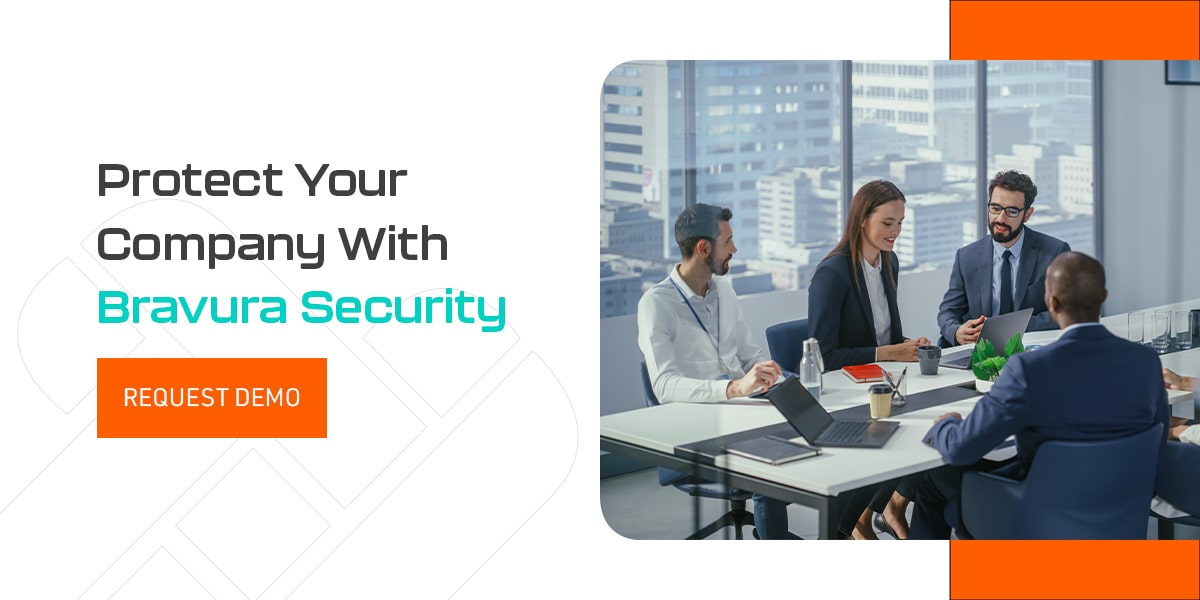Companies worldwide are rapidly turning to digital solutions. From online communication methods to productivity applications, technology offers ways to streamline business procedures and improve productivity.
As companies continue to garner resources and applications, it becomes more challenging to manage user identity and access. Each online application requires a set of login credentials. Organizing these credentials across every employee can become overwhelming. All parties also have varying levels of access to corporate information, making access regulation more difficult.
In response, many have turned to identity and access management (IAM) for help. IAM solutions allow you to regulate user access and simplify the login process for online applications. They also assist with security measures, creating a safer data environment for company information.
Read on for more information about identity and access management systems.
What Is Identity and Access Management?
So what is IAM? Identity and access management is a framework of policies and technologies that allow you to manage digital identities. Overall, IAM helps companies regulate digital access by:
- Identifying users in a system.
- Adding, removing or updating individuals in a system.
- Assigning access levels or clearances to individuals.
- Protecting sensitive data.
An IAM system determines user access to crucial business systems, verifying users' identities before letting them access digital interfaces and records. IAM systems use authentication and access control to determine your access to company systems.
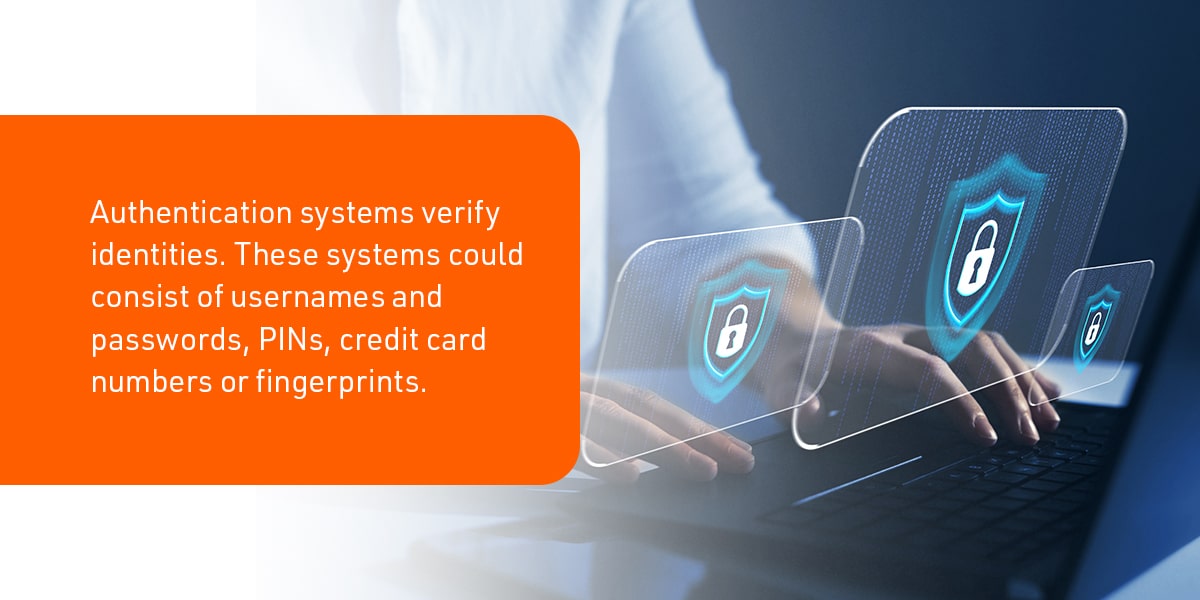
Authentication
Authentication systems verify identities. These systems could consist of usernames and passwords, PINs, credit card numbers or fingerprints. When you enter your identifiable information, the interface checks it against a database. If your inputted information matches the system records, the IAM system recognizes you as an accepted user. Authentication prevents restricted users or people outside your organization from accessing private company interfaces.
Depending on company preferences, identity and access management systems can use various technological components. For example, an IAM system could feature elements like:
- Single sign-on (SSO) systems: This authentication method verifies user identity with a single set of credentials, such as one username and password combination.
- Two-factor authentication: This method adds another layer of identification for extra security. For example, a user might have to answer a personal question or provide a fingerprint after they submit their login credentials.
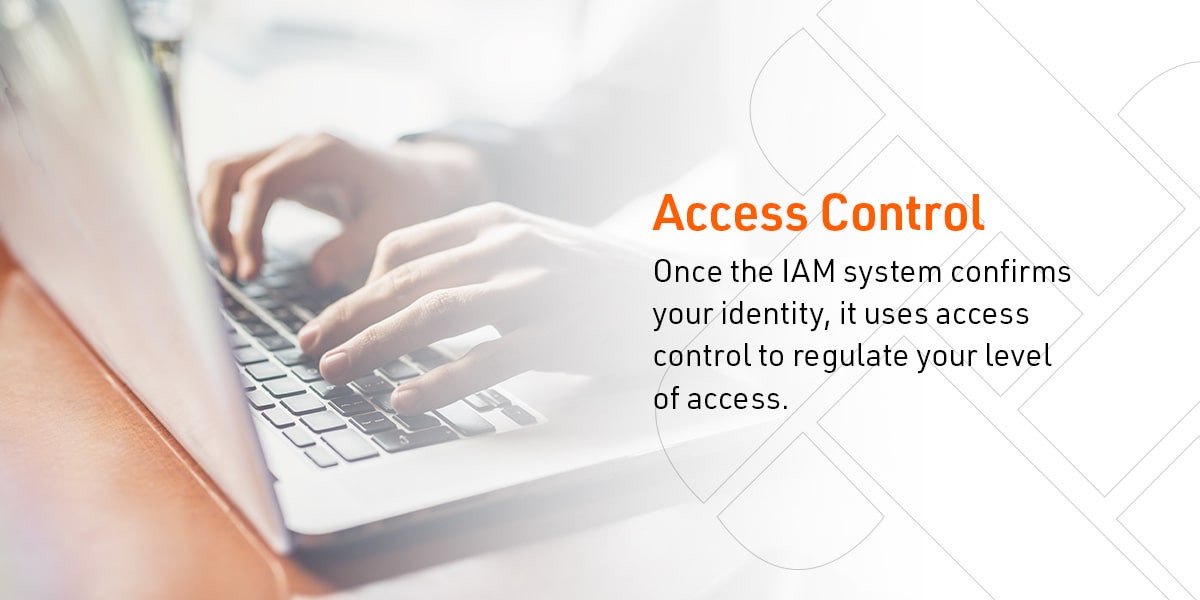
Access Control
Once the IAM system confirms your identity, it uses access control to regulate your level of access. This feature lets company officials restrict access to sensitive information. For example, an entry-level employee's access would be more restricted than a high-level executive's. Access control allows you to regulate system access as necessary.

Why Is IAM Essential for Your Business?
As threats of ransomware and other digital attacks increase, IAM becomes even more crucial. Business officials and IT departments face the constant challenge of protecting corporate data and resources. Hackers continue to find new ways to break through defenses and compromise security measures.
In addition to external attacks, companies can also face security threats from within. These attacks are more challenging to prevent since internal employees already have access to interfaces with sensitive data.
A strong IAM system can help companies protect their data by streamlining verification processes instead of placing the bulk of identity management on IT departments. Identity and access management automatically tracks and controls each account within the company system, ensuring access remains regulated. It can also expand to meet specific company security requirements.
Overall, IAM is an integral component of data protection and company security. It provides a robust solution for potential cyberattacks while also making it simple to regulate employee access.
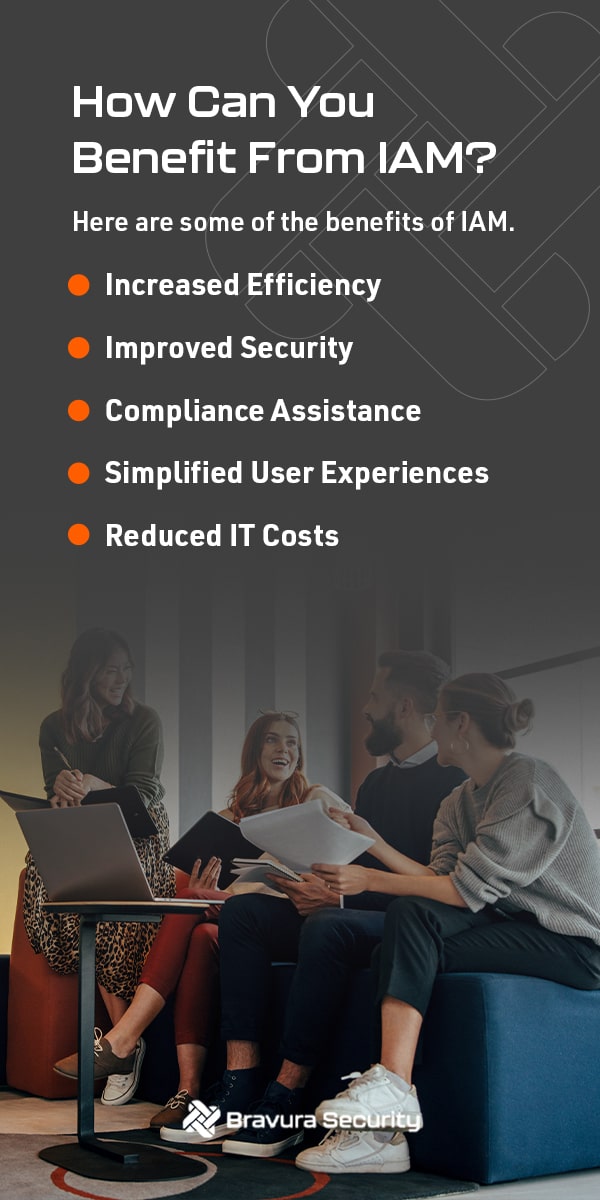
How Can You Benefit From IAM?
If you don't have an IAM system in place, implementing one could provide significant advantages to your organization. Here are some of the benefits of IAM.
Increased Efficiency
An IAM system automatically regulates user access. Instead of spending time manually processing requests to provision or deprovision access, the system completes these functions with little additional help. In turn, business officials and IT departments have more time to complete their other tasks.
With an IAM system in place, everyone can access the company's online interface whenever they need. From employees and contractors to vendors and shareholders, all parties with access can log in on any device. This increased access makes it easier to complete business-related tasks.
Improved Security
IAM also enhances security for the entire company. An IAM system allows security administrators to create and enforce policies across all company systems. With these broad measures in place, it’s easier to identify both internal and external threats.
IAM systems can immediately alert you to potential threats and they make it simple to remove access privileges when necessary. You have constant information on login locations and who accesses data regularly. This information helps administrators identify data breaches or internal attackers. Overall, an IAM system ensures that company data is only accessible to those with the correct clearance.
Compliance Assistance
All data security is subject to regulatory compliance measures. Organizations need to be able to verify data protection information, including:
- Who has access.
- How they protect data access.
- How they manage passwords.
An IAM system can help you streamline these processes by organizing all of this information into one place. IT administrators can use the system to provide lists of user credentials and show how they keep corporate data protected.
Simplified User Experiences
IAM systems help create unique digital identities for all users. These typically consist of a single set of credentials that works at any time of day with any device. Once the system verifies your identity, you can access the company interface instantly. Instead of facing lost productivity time due to access issues, the IAM automatically regulates and processes user access. In turn, you can get started with daily tasks much more quickly.
IAM systems also simplify user experiences by assisting with request approvals. Without an IAM system, it might be challenging for users to know which areas they need to access and how to submit a request. They might also face lengthy approval times and inconsistent methods across different company systems. These restrictions can result in a slow, frustrating user experience that impedes productivity. IAM systems make access requests easy to find and complete, helping to expedite the approval process and improve efficiency.
Reduced IT Costs
An IAM system simplifies many processes for IT help desks and administrators. An IAM system can provide users with self-service access procedures and automated fulfillment, leading to reduced IT expenses.
For example, the system can automate password recovery, walking users through the process and freeing administrators from trying to troubleshoot. Employees can get back to work sooner and IT departments can focus on more high-priority tasks, like implementing security measures.
7 Types of Identity Management and Access Controls
Identity and access management contains a broad range of controls and solutions. Companies can work with service providers to create the IAM solution that meets their company's needs. There are a variety of protection mechanisms available and businesses can implement them in the manner that suits them best.
Here are a few of the types of access controls:
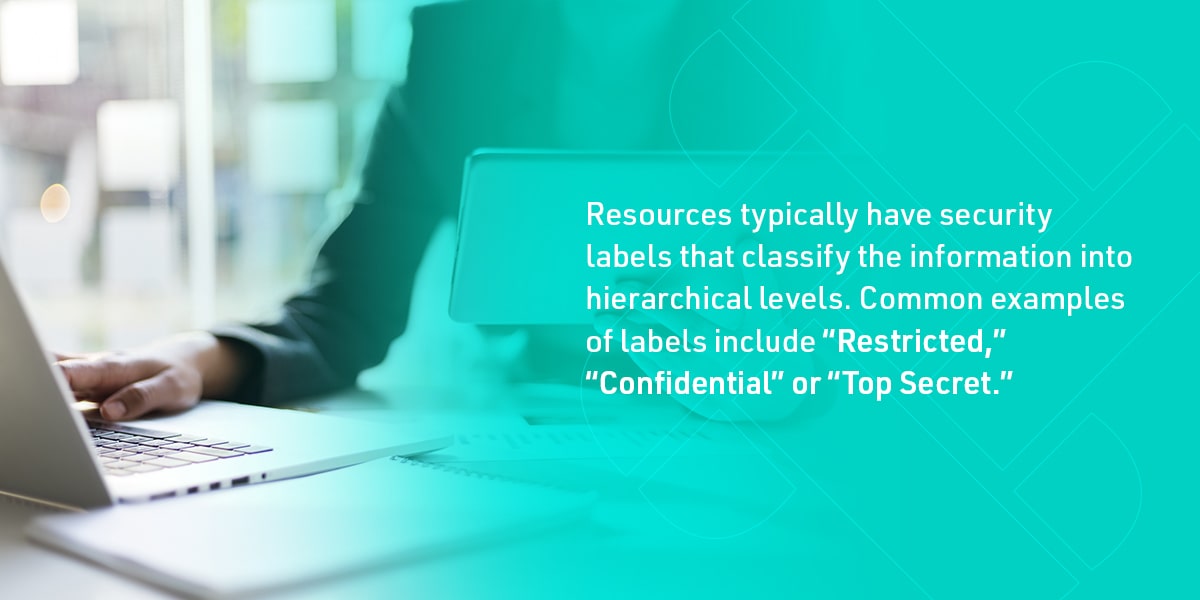
1. Mandatory Access Control
Mandatory access control uses an automated system to regulate access to company interfaces. This method limits access to resources based on the information's sensitivity. Resources typically have security labels that classify the information into hierarchical levels. Common examples of labels include “Restricted,” “Confidential” or “Top Secret.” Users fall into corresponding groups based on the level of access they need.
For example, one employee might have clearance to access the “Restricted” informational levels while another employee does not. The IAM system automatically determines a user's clearance level when they log onto the company systems.
2. Discretionary Access Control
This type of access control focuses on individual files and data objects. The owner of each file is the person in the company who originally created it. The owner automatically has control — or discretion — over which users can access the data object. Only those with specific permission can extend access to other users.
The owner initially has total control over which other users gain access, but they can also give other officials this ability. An IAM system with discretionary access control regulates access based on the owner's settings.
3. Rule-Based Access Control
Rule-based access control uses a predetermined set of access rules and permissions to regulate user access. The rules define specific scenarios in which it would grant or deny access. Administrators preset security systems to only admit users who meet the required criteria. If you implement an IAM system, it verifies user credentials against the access rules to determine entry.
This method offers a straightforward way to limit and grant access, but it is best suited for broad-based applications. Assigning different access levels in a rule-based system can become very complex because the systems usually apply the rules to all users equally.
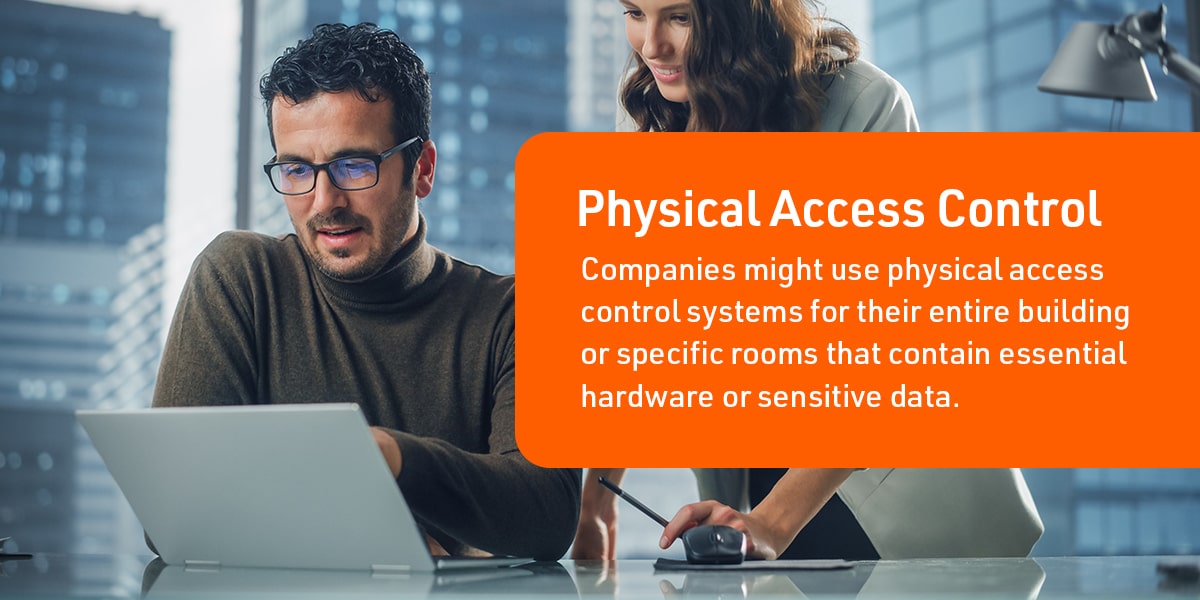
4. Physical Access Control
This type of IAM system focuses more on physical spaces instead of online ones. It controls access to physical locations for companies, such as rooms, buildings or IT department spaces. For example, doors with badge readers only unlock when users present a valid credential. The readers are programmed to only admit those with the correct physical credentials.
Companies might use physical access control systems for their entire building or specific rooms that contain essential hardware or sensitive data. These systems protect against physical attacks, vandalism or other external threats to corporate property.
5. Role-Based Access Control
Role-based access control uses a user's role within an organization to grant or restrict access. Employees have varying levels of responsibilities and duties within companies. The information they have access to often depends on the nature of their job and how the information they need to complete their tasks.
For example, an executive in a company would have more comprehensive access than an entry-level employee. Role-based systems make it simple to monitor who has access to sensitive data at any given time. You might also split users by department, where users in the human resources department could view data that other users couldn't and so on.
6. Attribute-Based Access Control
This access type focuses on attributes rather than roles. It separates users into those with “approved” characteristics and those without authority. Attribute-based control protects objects, network devices and IT resources from unauthorized members.
In this method, the system designates users as either authorized or unauthorized based on these attributes:
- Subject: The subject is the user who is requesting access. Their identity can consist of their employee ID, job roles, organizational memberships, management level or security clearances. The system pulls this information from HR documents or other employee directories.
- Resource: The resource is the object that the user wants to access. For example, a user might try to access a resource for their job responsibilities. The system will characterize resources by creation date, owner, file name and data sensitivity.
- Action: The action refers to what the user wants to do with the resource. For example, they might want to copy, edit or transfer a file to someone else.
- Environment: The environment is the wider context of access requests, which may include the request's time, user's device or encryption level.
The IAM system uses these attributes to determine whether a user can access the requested resource.
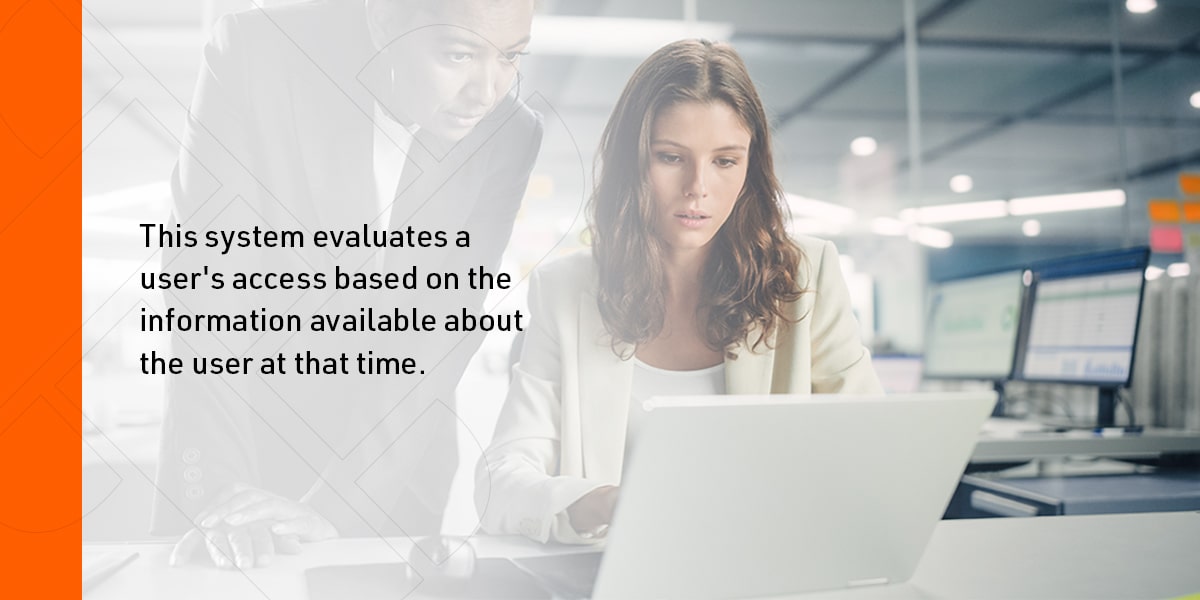
7. Policy-Based Access Control
In many ways, policy-based access control combines features of other access control types, such as attribute- and role-based. Policy-based access control uses digital policies to manage access to company interfaces. It enforces strict access policies, displaying a “zero trust” mindset.
This system evaluates a user's access based on the information available about the user at that time. With all of these elements put together, the system conducts a real-time analysis of recent user activity and other attributes. The system compares the user's attributes to the digital policies in place to determine access. These policies could consist of compliance regulations or company protocol.
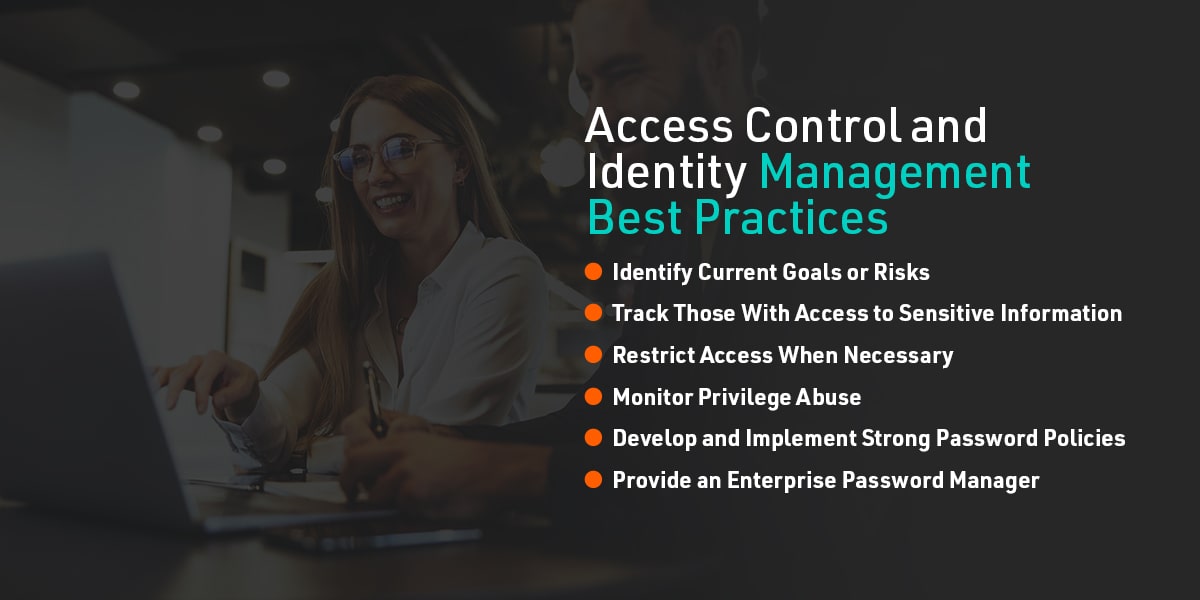
Access Control and Identity Management Best Practices
Implementing an IAM system into your company can bring many advantages. No matter what type of system you're interested in, you can adapt it to meet your organization's needs.
If you're interested in establishing an IAM system, here are some tips and best practices to consider:
Identify Current Goals or Risks
One of the best ways to get the most out of your IAM system is to analyze your company's needs first. Consider your organization's current goals or issues. For example:
- You might be concerned about external security threats, such as ransomware.
- Your primary goal might be to strengthen security measures.
- You might be interested in reducing your IT department's workload so they can focus on higher-priority tasks.
With your goals in mind, you can develop the IAM system that directly addresses these needs and helps with company goals.
Track Those With Access to Sensitive Information
Once you have an IAM system in place, it's crucial to track every user with access to sensitive data. Your company's primary focus should be to protect that data, only allowing authorized users to view it.
Keep a detailed list of those with access. Many IAM systems will generate these lists automatically. If a data breach occurs and sensitive data is leaked, you can easily access these lists to identify potential leakers.
Restrict Access When Necessary
It's usually in your best interest to grant as little access as possible. In other words, you should only allow users to access what they need to complete their daily job functions. This strategy will enable you to maintain more robust security around corporate interfaces and data. You can also restrict or reduce access if you sense potential security threats.
Monitor Privilege Abuse
Privilege abuse occurs when people use accounts with additional access for fraudulent or malicious reasons. For example, they might use the extra data to exploit or damage confidential information. You should thoroughly track any instances of privilege abuse and trace the actions back to users. That way, you can identify internal threats and prevent them from reoccurring.
Develop and Implement Strong Password Policies
Strong passwords are crucial for company personnel. Cyber-attackers use various methods, including brute force attacks, to guess login credentials and hack into user profiles. These attacks can lead to severe security breaches in companies. Luckily, using strong passwords can make it more challenging for these hackers to succeed. Your organization should mandate strong passwords, such as using a combination of numbers, upper- and lower-case letters and special characters, and then check those passwords against compromised password databases. Your organization may even consider adopting passwordless technology to either fully remove password-based authentication or at the very least, use passwords less.
Provide an Enterprise Password Manager
An enterprise password manager stores all of your staff's passwords in a secure vault. The software goes further than strong password techniques and creates a comprehensive security strategy. Organizations can consider implementing these for zero-knowledge secrets and passwords.
Transform Your Business With Bravura Security's Identity & Privileged Access Management Solutions
The best IAM systems come from high-quality service providers. At Bravura Security, we are committed to providing clients with top-quality identity and access management solutions. We strive to provide clients with products that lower operating costs, strengthen internal processes and improve user experience.
Our Identity and Access Management Suite is available for both cloud-based and on-premises needs. We offer a wide range of identity management solutions, such as:
- Bravura Identity: This integrated solution manages user identities across all systems and platforms. As a high-quality IAM solution, it features a web portal, workflow manager and analytic data. It ensures swift access and makes it simple to revoke access when necessary.
- Bravura Privilege: Bravura Privilege focuses on users with additional privileges. It enforces authorization and verification before granting access to sensitive data objects and platforms. It logs each user's activity, making it easier to monitor data misuse. You can integrate this solution with as many clients and servers as you need.
- Bravura Safe: Bravura Safe is a high-quality enterprise password manager that centrally manages passwords. The software centralizes passwords and encrypts them against interference, keeping them safe against potential cyber-attacks.
- Bravura Pass: Bravura Pass manages a wide variety of login credentials across your company systems. It includes self-service password features that let your employees reset credentials without IT help. The automated processes allow your employees to focus on higher-priority responsibilities.
Implementing our Identity and Access Management Suite gives you a comprehensive management solution. Depending on your company's needs and preferences, you can install each of the features onsite or online.
Protect Your Company With Bravura Security
With decades of experience in IAM solutions, Bravura Security is a leading provider in the industry. We understand the necessity of solid security for your company's data. We have evolved our products to meet the changes in cybersecurity and identity management so that your organization can operate at its best.
If you're interested in installing our Identity and Access Management Suite, request a demo today. We can help you regulate identity management access and improve company security.
Related Articles
5 Identity Security Challenges in the Finance Industry
Cybersecurity threats are prevalent in the financial sector. In 2024, finance and insurance wasthe second-most vulnerableindustry to cyberattacks. This sector was...
The Chaos of Identity: Beyond IAM for Ransomware and Security Challenges
Ransomware attacks are increasingly disruptive, sophisticated and continue to plague organizations across all industries, from gasoline suppliers to higher education...
